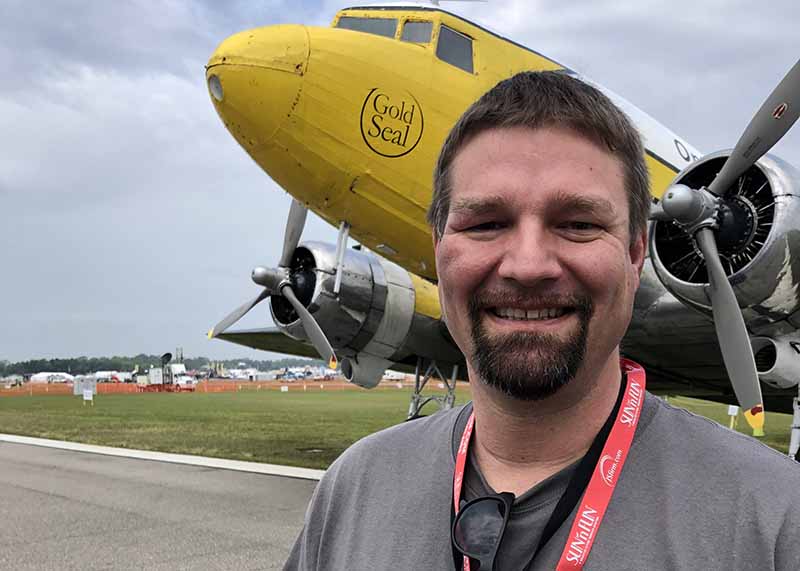General
Demystifying Flight: Jeff Jorgenson’s Perspective on Normalizing Aviation Education


Aviation education offers students a fascinating journey into flight, combining science, technology, engineering, and mathematics principles. To effectively incorporate aviation education into school curricula, learning from experienced professionals in the field is beneficial. Jeff Jorgenson, a veteran aviator and youth advocate, shares valuable tips for educators and schools to inspire students regarding aviation.
These tips encompass spreading awareness, integrating into the STEM curriculum, utilizing flight simulators, organizing field trips and collaborations, encouraging aviation-focused extracurricular activities, and forming partnerships with aviation institutions.
Spreading Awareness & Inspiration:
Exposing students to the possibilities and excitement the field holds is crucial to igniting curiosity and interest in aviation. Jeff suggests inviting aviation professionals to share their experiences, career paths, and insights with students. Guest lectures, engaging presentations, and panel discussions can help students understand the importance of aviation and its diverse career opportunities, thus inspiring them to explore the field further.
Integration into STEM Curriculum:
Incorporating aviation-related topics into the STEM curriculum enhances students’ understanding of aviation principles and their practical applications. Jeff emphasizes integrating aviation-themed projects, experiments, and activities across different subjects.
For instance, physics lessons can delve into the principles of flight, mathematics classes can involve calculations related to navigation and flight paths, and technology classes can focus on aircraft design and construction. This interdisciplinary approach helps students connect theoretical concepts with real-world scenarios.
Using Flight Simulators:
Flight simulators provide students with hands-on experience and a realistic environment to explore aviation concepts. Jeff encourages schools to invest in flight simulator technologies, allowing students to navigate aircraft virtually and learn about flight controls, procedures, and navigation. These simulations develop critical thinking, decision-making, and problem-solving skills while providing a safe and controlled environment for students to practice and learn from their mistakes.
Field Trips & Collaborations:
Organizing field trips to aviation-related facilities and collaborating with aviation professionals create invaluable learning opportunities. Jeff recommends arranging visits to airports, air traffic control towers, aerospace museums, and aviation maintenance facilities. These visits expose students to different aspects of the aviation industry, such as aircraft operations, air traffic control, and maintenance.
Additionally, partnerships with local aviation organizations can offer mentorship programs, internships, or job shadowing experiences, allowing students to witness aviation professionals in action and gain a deeper understanding of various career paths.
Partnerships with Aviation Institutions:
Schools can access specialized programs and resources in aviation education by partnering with aviation institutions. This includes collaborating with local flight schools, aviation training centers, or universities offering aviation-related courses.
These partnerships enable schools to integrate aviation management, pilot training, and air traffic control into their curriculum. It allows them to leverage the expertise and resources of aviation institutions, providing students with a comprehensive education that prepares them for successful careers in the aviation industry.
Incorporating aviation education into schools requires a strategic approach that combines awareness, integration, experiential learning, and collaboration. Jeff Jorgenson’s tips provide a valuable framework for educators and schools to inspire and educate students about aviation.
By spreading awareness, integrating aviation into the STEM curriculum, utilizing flight simulators, organizing field trips, encouraging extracurricular activities, and forming partnerships with aviation institutions, schools can nurture a new generation of aviators, engineers, and innovators ready to take flight in the dynamic world of aviation.
Jeff’s organization, Open Air Flight Club, encompasses these tips and works to provide educators with a streamlined way of including aviation as a full-time subject in their curricula. Visit the OAFC website to learn more.





 Technology3 weeks ago
Technology3 weeks agoBuilding a Magento Loyalty Program: Strategies for Customer Retention



 Technology4 weeks ago
Technology4 weeks agoHow Business Landscape Changing by Artificial Intelligence in Digital Marketing



 Model3 weeks ago
Model3 weeks agoSondra Blust: Bio, Wiki, Age, Height, Weight, Body Measurement, Hair & Eye Color, OnlyFans



 Health3 weeks ago
Health3 weeks agoA Groomer’s Guide to Eco-Friendly Pet Products



 Technology2 weeks ago
Technology2 weeks agoWhat Are The Best Practices For Angular JS17 Development?



 Technology2 weeks ago
Technology2 weeks agoAccelerate Your Business Growth With These 6 Instagram Techniques



 Technology5 days ago
Technology5 days agoNavigating New Realities: Insights from a Metaverse Speaker



 General5 days ago
General5 days agoIndexing vs. Abstracting: Understanding the Key Differences

You must be logged in to post a comment Login